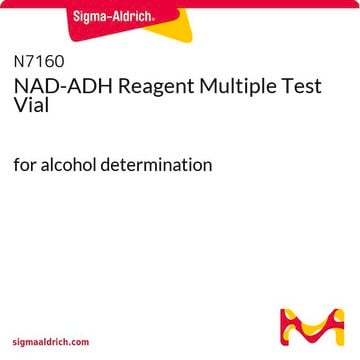MAK082
Aldehyde Dehydrogenase Activity Colorimetric Assay Kit
sufficient for 100 colorimetric tests
Synonym(s):
ALDH Activity Assay Kit
About This Item
Recommended Products
usage
sufficient for 100 colorimetric tests
detection method
colorimetric
relevant disease(s)
cardiovascular diseases; cancer; hematological disorder
storage temp.
−20°C
General description
Application
Features and Benefits
Suitability
Principle
signalword
Danger
hcodes
Hazard Classifications
Carc. 1B - Eye Dam. 1 - Skin Corr. 1B
Storage Class
6.1C - Combustible acute toxic Cat.3 / toxic compounds or compounds which causing chronic effects
Certificates of Analysis (COA)
Search for Certificates of Analysis (COA) by entering the products Lot/Batch Number. Lot and Batch Numbers can be found on a product’s label following the words ‘Lot’ or ‘Batch’.
Already Own This Product?
Find documentation for the products that you have recently purchased in the Document Library.
Customers Also Viewed
Articles
AldeRed™ 588-A detects ALDH activity in cancer stem cells, aiding in cancer research.
Our team of scientists has experience in all areas of research including Life Science, Material Science, Chemical Synthesis, Chromatography, Analytical and many others.
Contact Technical Service









